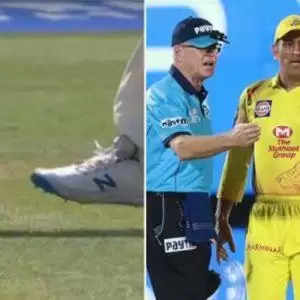5 Cricket Rules You May Not Know: Unlike many other sports, cricket has seen a number of significant changes brought to the game since it started leisure activity in the late 16th century.
More so in the past three decades, the game has undergone massive transformations with changes in rules, the introduction of formats, and the governing body trying to restore the balance between bat and ball while still keeping the game attractive for the spectators.
Not all the fans, though, have caught up with the rule changes. Consequently, fans have been left confused and innocent when some rules come into play; there have even been times when almost all the fans learned something new from the rule book despite watching the game for a long time.
Here are 5 rarely used cricket rules that fans may not be aware of:
Batsman hitting the ball twice?
We use to call dead balls in gully cricket when a batsman accidentally hits the ball twice. But what is the international rule for this? Law 34 clearly states that if a batter intentionally hits the ball twice, in order to change his shot, he is out.
However, there are two exceptions:
If the batsman is returning the ball to the fielder after striking it once – but before contacting the ball with the bat on the second, he must ask the fielder’s permission.
And the batsman can strike the ball a second time in an effort to protect their wickets (that is preventing the ball from hitting their wickets after he has played a shot) but not when it could result in a catch.
Withdrawing appeals
There have been instances, but only a few when a fielding team has withdrawn their appeal even after the batsman had been deemed out – MS Dhoni retracting India’s appeal of Ian Bell’s run-out from the 2011 Nottingham Test is cited often in this category.
A fielding team captain may withdraw an appeal in accordance with Cricket Law 31.8 with the umpire’s consent. The reasons for that could be showing Spirit of Cricket, in case of Mankad for example, or if the fielding captain feels that the batsman had been given out incorrectly.
Ball touching the spider-cam or its wire
This rule has at times helped both the batsman and the bowling team. The rule if that if an aerial shot from a batsman hits the spider camera or its wire, then the umpire shall declare that delivery as dead and the ball will be re-bowled.
This has caused frustrations: when the batsman had hit the ball for a six but it had struck the spider-cam then the six won’t be given; or when the ball is up in the air and a fielder is settling down for a catch, if the ball deflects from the spider-cam the batter is saved.
Kicking the ball over the boundary
This is a really unusual and rarely used rule. But once while fielding Virender Sehwag kicked the ball over the boundary deliberately! Why? It was the last ball of the over and South Africa were 9 down. The shot was played by Amla and since India wanted to have number 11 Morne Morkel on strike for the next over, Sehwag booted the ball intentionally over the boundary line.
However, the umpires didn’t appreciate such an act by Sehwag and ruled this to be an infringement and handed India a five-run penalty to be added to South Africa’s account.
Ground obstacles are boundaries
While such a thing is not seen in international cricket anymore, you may find an instance of a tree to be inside the playing field! And this feels so gully cricket.
In fact, during an international game in Pietermaritzburg, South Africa, between Sri Lanka and Bangladesh there was a tree located inside the ground near the boundary. The rule was that if the ball hits the tree, then it will be given a boundary only if both captains agree prior to the toss.

